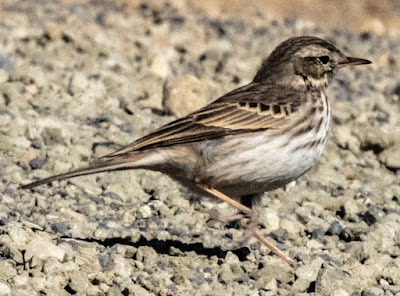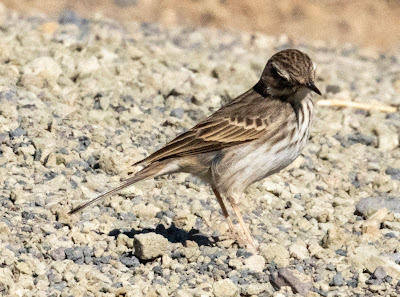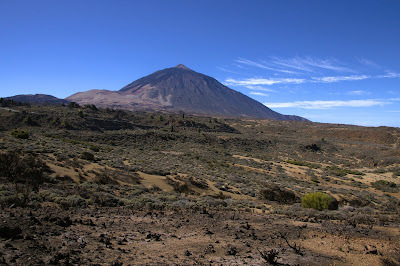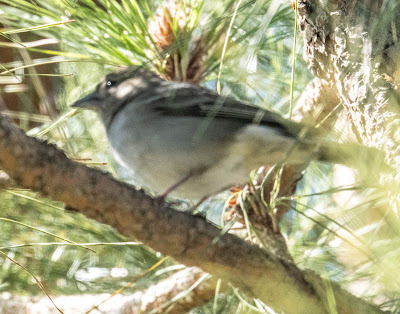What is in a Pipit's name

The Berthelot's pipit is a non-descript pipit with a short tail and a big head. The pipit, found only on the Canary and Madeira Islands, was named after Sabino Berthelot by his friend Carl Bolles. Why name it after the preeminent botanist in this archipelago? It just was.
Sabino Berthelot wasthe son of a Marseille merchant. He joined the French Navy andserved as a midshipman during the Napoleonic Wars. After the war he joinedthe merchant fleet, travelling between Marseilles and the West Indies. Hefirst visited the Canary Islands in 1820, where he taught at a school in Tenerife andmanaged the botanical gardens at Orotava for the Marquis of Villanuevadel Prato. The are schools also named after Berthelot and Harvard has honored him in publications for his Botany work on the island. With his work as a midshipman during the French slave area, one wonders how long until someone will find that he was a crewman on some objectionable ship.
In Madeira, people in rural areas used to call it “OurLady’s bird”, giving rise to the legend that the Berthelot’s pipit accompaniedthe Holy Family in their journey from the Holy Land to Egypt, with the missionof wiping out with its long tail their footprints in the sand to avoid beingfollowed by King Herod.
On Tenerife, although seen by the sea on flat open fields,most of which have been made into banana plantations. Luckily they arealso seen up on the dry arid plains around the volcano Teide. I did notfind them an easy bird to find. They seem to be parking lot birds. Looking for them I struck out, dumb luck scored me three birds.

We saw the pipits on Teide Volcano, a huge 12, 288 foot, active volcano that dominates Tenerife.

It last erupted in 1908 from the flank and was not a serious event, previously it erupted in 1798 and from 1704-6, and last from the summit in about 850 AD, some believe that it it erupts fully again, it could split the island and be a catastrophe causing a huge tsunami heading westward towards...you guessed it America.
The most numerous critter on the volcano is the Gallot's lizard, or Tenerife island lizard. Named after an armature naturalist D. Gallot who collected the first specimen of this endemic lizard. Found only here and on La Palma and a small island in between, the lizard is a good find for herpetologists, but was actually a pest where we were eating lunch as they tried to storm our lunch bags.

The big bird on Tenerife to find is the Tenerife BlueChaffinch. found only on Tenerife and with only 4-5,000 birds in existence, itwas the go to bird for the trip. Sadly, Tenerife had some serious forestfires recently and as an obligate pine forest bird, much of its habitat went upin smoke. Even without that, they are up elevation and in the pines andthere are not a lot of places to even stop to look for them. Since Iwas a tag along to a group that I was the only birder with, it is amazingthat I even found one. I saw two. One in low light which I stillhad the camera on auto focus and it focused out of the bird and it flew awayand then I got a second chance two hours later. That bird would NOT comeout of the pine tree.

I got a good look at the male in my first sighting. Thisfemale or immature male was not optimal but sometimes this is all you get.
This was the last of the Island endemics out here I had tosee, but hoping for photographs of a couple I never got on camera. I didnot go over to Grand Canaria to see its blue chaffinch, I will leave that foranother time. I still have two days to photograph rather elusive pigeons,I see a fellow big year birder Neil Hayward saw a few hours after I did, butthat is tomorrow mornings project. I sent Neil an email, we will see ifhe sends me a response. Who knows?
Later
Olaf



